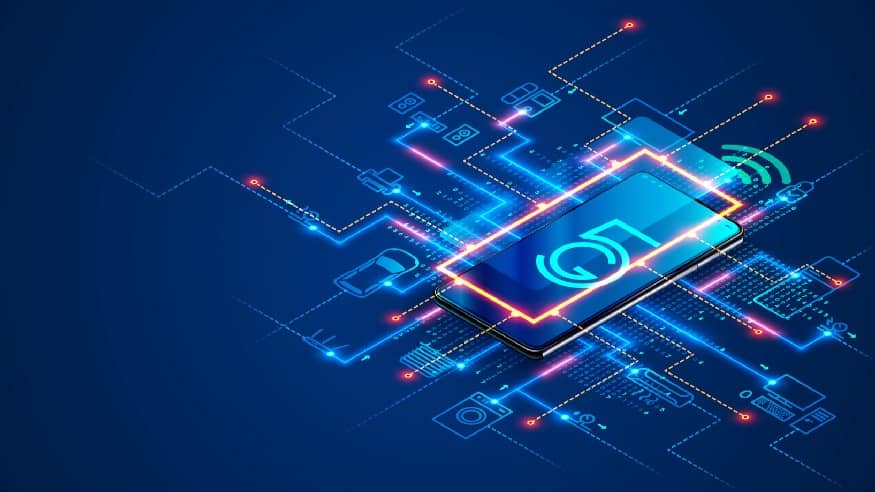
In the not-too-distant future, just about everything is going to be connected to the internet. Nearly every industry is looking to be smarter and more connected. Our home lives are changing and getting more and more connected, too — with not just voice assistants and streaming media, but even doorbells, garage door openers, and dishwashers that know when they need more rinse aid. Last year, 12 billion IoT devices were connected to the internet; in 2025, that number is projected to double to 24 billion, according to GSMA Intelligence.
And that means much greater security risk.
The attack surface — that is, the opportunities for hackers to find vulnerabilities — is expanding, and there’s now also cyber risk in situations where we never before had to worry about security. Of course, your personal finance software needs to be secure. So does your car, which is now internet-enabled. Cybersecurity is necessary, too, for industrial systems like HVAC and fire control that once functioned independently but today are connected to the network for monitoring, control, and updates. Even our phones have become more vulnerable. Risk was limited when you used a cellular connection only to make calls or exchange SMS messages. Now that your phone provides access to your email account and your entire digital life, it’s a much more valuable target for hackers.
As we move into the 5G era, the network’s high throughput and low latency will entice more services to migrate to the public cellular network, increasing the number of connected devices and previously siloed services that now must be secured. Emergency services, for example, now use proprietary networks to achieve necessary bandwidth and reliability. The 5G network helps to provide security, because organizations can use 5G to create their own private mobile networks.
At Qualcomm Ventures, with our expertise in 5G, mobile devices, and IoT, we see opportunities to invest in companies that build on the security capabilities of 5G and help to create a more secure network at every layer of the security stack, from device security to network security to protecting identity and access management.
The elements of the security stack start with the device. The device allows access to the network, so keeping the device secure also helps keep the network secure. Lookout, a Qualcomm Ventures portfolio company, offers solutions for endpoint security for mobile and distributed devices, something that’s becoming even more important as resources shift to the cloud and 5G promises even more mobile connectivity across enterprises. In enterprise settings, SentinelOne, which joined the Qualcomm Ventures portfolio earlier this year and was just named to CNBC’s Disruptor 50 list, provides AI-based endpoint security for PCs and IoT devices. That kind of protection has become even more important as a massive shift to working from home has added countless new personal devices to enterprise networks.
From the device, we then move up a layer to the network. Our portfolio company CyberX, for example, developed an agentless platform that industrial enterprises can deploy to continuously auto-discover unmanaged industrial IoT devices and monitor their networks for destructive cyberattacks. Microsoft recently acquired CyberX, underlining the importance of IoT cybersecurity services for the large enterprises the software giant serves. The CyberX platform integrates with customers’ existing cybersecurity systems, enabling them to effectively manage security where their information technology meets their operational technology. This ability to protect critical infrastructure at the network level will permit the ongoing IoT industrial revolution.
Network-level security is crucial in-home applications, too, as we increasingly turn to smart devices to manage our daily lives. Plume, another portfolio company, offers one of the world’s first open and hardware-independent platform to keep all your smart-home systems secure.
The final layer is identity and access management. That means making sure that even within a secure network, users only have access to the devices or systems to which they’re supposed to have access. Someone who accesses your network for inventory control shouldn’t be able to connect to your financial management systems; your auditors shouldn’t be able to access network management. Cloudflare, another Qualcomm Ventures portfolio company, offers solutions that are essential to protecting internet properties against emerging and sophisticated threats to disrupt normal web traffic.
And sometimes those layers intersect. That’s one of the reasons we invested in Particle, a fully integrated IoT platform that simplifies the IoT tech stack and enables companies to quickly and easily add smart functionality to their products and turn them into IoT devices, whether for consumers or enterprises.
The global IoT market was valued at $154 billion in 2018 and is growing at about 30 percent annually, according to the 2019 State of IoT Report from IoT Analytics. IoT security is currently the smallest segment of that market — but also the fastest-growing one. As the IoT revolution continues, further enabled by 5G, we’re investing in companies that keep our devices, networks, and ever-expanding digital footprint secure. Our world will only get more connected, and we’ll continue to look for disruptive companies that will help secure those proliferating devices, networks, and communications to keep us all safe — and sleeping better at night.
Learn more about Qualcomm Ventures and our IoT investments.



